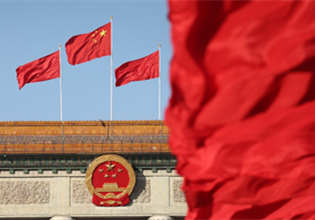Inner Mongolia maintains foreign trade growth
Inner Mongolia autonomous region in North China maintained foreign trade growth in the first two months of the year, according to information released at a news conference held by the regional government’s novel coronavirus prevention and control department on March 17.
The total value of foreign trade in the autonomous region hit 17.15 billion yuan ($2.45 billion) during the two-month period, representing growth of 2.9 percent over the same period the previous year -- and ranking fourth in the country based on its growth rate.
Affected by the epidemic, Inner Mongolia's foreign trade enterprises are facing many operational difficulties such as reduced export orders, rising logistics and shipping prices, blocked customs clearances and reduced capital flows.
Since Mongolia and Russia have adopted epidemic prevention and control measures, most of the road freight passages at the land ports bordering the two countries have been closed – in particular the suspension of coal imports at Ganqimaodu and Ceke ports.
Officials said foreign trade upstream and downstream companies are also suffering from insufficient operating rates and labor shortages, difficulties in purchasing raw materials and rising prices, as well as sharp declines in product prices and pressure on product inventory.
Inner Mongolia's transport statistics revealed that from January to February, the value of road transport and air transport dropped by 34.5 percent and 32.3 percent, respectively.
To help solve such operational difficulties, the government launched trade stimulus policies and carried out tax reductions and business assistance measures.
According to statistics, as of March 16 the production and operations resumption rate of Inner Mongolia’s foreign trade enterprises was 66.4 percent. Of that, the resumption rate for the top 100 foreign trade enterprises reached 92 percent. Officials said the total value of imports and exports handled by these companies accounted for 70.4 percent of that for the entire Inner Mongolia autonomous region.
Meanwhile, officials said eight out of the 11 national-level foreign trade transformation and upgrading bases in Inner Mongolia have resumed work and production. The import and export value of 11 bases normally account for some 42 percent of Inner Mongolia's total.
The local government next plans to further guide foreign trade enterprises to make good use of the various fiscal, financial, taxation, social security, employment and other assistance and relief policies that have been rolled out.
It will also support cross-border e-commerce to launch online supply of epidemic prevention materials and daily necessities, as well as support innovative service methods being implemented by foreign trade service companies.
Officials said the government would also communicate and coordinate with neighboring countries to resume border trade as soon as possible after the epidemic is resolved.



 Print
Print Mail
Mail





